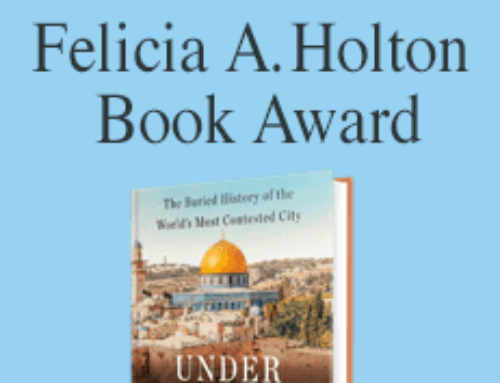The Best of Science and Nature Writing 2011 Collapse? What Collapse? Societal Change Revisited/ Science Magazine
(Notable)

CAMBRIDGE, UNITED KINGDOM—At midnight on 24 August, 410 C.E., slaves quietly opened Rome’s Salaria gate. The waiting Visigoths poured through the narrow passage, trumpets blaring and torches held high. The first sack of Rome in 8 centuries has often been cited as the moment when one of the world’s largest, wealthiest, and most sophisticated empires died a violent death. For researchers struggling to understand how societies collapse, Rome’s fall has served as a model and a touchstone.
And yet an eclectic group of scholars who met recently at the University of Cambridge* argues that true social collapse is actually rare. They say that new data demonstrate that classic examples of massive collapse such as the disintegration of Egypt’s Old Kingdom, the end of the Classic Maya period, and the vanishing of pre-Columbian societies of the U.S. Southwest were neither sudden nor disastrous for all segments of their populations. “Collapses are perhaps more apparent than real,” says Cambridge archaeologist Colin Renfrew.
Rome, for example, didn’t fall in a day, as Edward Gibbon recognized in the 18th century in The History of the Decline and Fall of the Roman Empire. More recent work underscores the fact that the sack of Rome was just one step in a long and complex spiral of decline that affected peoples of the empire differently. For example, archaeologists in northeastern England have recently uncovered post-Roman villages that clung to the empire’s ways while their neighbors swiftly abandoned the Latin language, Roman-style kitchenware, and construction practices. “There’s a bewildering diversity that is only magnified as the system falls apart,” says Cambridge archaeologist Martin Millett.
This emphasis on decline and transformation rather than abrupt fall represents something of a backlash against a recent spate of claims that environmental disasters, both natural and humanmade, are the true culprits behind many ancient societal collapses. Yale University archaeologist Harvey Weiss, for example, fingered a regional drought as the reason behind the collapse of Mesopotamia’s Akkadian empire in a 1993 Science paper. And in his 2005 book Collapse: How Societies Choose to Fail or Succeed, geographer Jared Diamond of the University of California, Los Angeles—who was invited to but did not attend the meeting—cites several examples of poor decision-making in fragile ecosystems that led to disaster.
Renfrew and others don’t deny that disasters happen. But they say that a closer look demonstrates that complex societies are remarkably insulated from single-point failures, such as a devastating drought or disease, and show a marked resilience in coping with a host of challenges. Whereas previous studies of ancient societies typically relied on texts and ceramics, researchers can now draw on climate, linguistics, bone, and pollen data, along with better dating techniques. The result, they say, is a more nuanced understanding of the complicated and often slow-moving processes behind massive societal change. “The rarity of collapse due to the resistance of populations to environmental changes or disease is considerable,” says Cambridge historian John Hatcher, who studies the Black Death; that plague ravaged medieval Europe and Asia yet did not overturn the existing social order.
 |
| Yale’s Harvey Weiss thinks climate has often spurred societal breakdowns. |
The change remains the same
Societal collapse is a slippery concept that defies a strict definition. Renfrew contends that it involves the loss of central administration, disappearance of an elite, decline in settlements, and a loss of social and political complexity. Collapse implies an abrupt end rather than a long, slow devolution.
That description would seem to fit the demise of Egypt’s Old Kingdom around 2200 B.C.E., after a 1000-year reign of pharaohs. As far back as the 1800s, researchers found texts and archaeological evidence pointing to a nightmarish era of civil war, drought, famine, and anarchy. This collapse, which brought down the all-powerful kings who built the pyramids, long appeared to be a relatively sudden event that ushered in a century dubbed the First Intermediate Period. Earlier work suggested that a massive drought, the same one that may have laid the Akkadian Empire low, struck at this time and dropped the level of the Nile.
But the latest climate data from the northern Ethiopian highlands—a key source of the Nile—do not support a severe drought, says Richard Bates of the University of St. Andrews in the United Kingdom. “Likely, climate change was not as much of an impact as perhaps first thought,” he says.
 |
| Searching the jungle. UCL’s Elizabeth Graham (top) sees continuity where others see collapse, as Mayan potters continued to make sophisticated wares (above) after the Classic period. |
An increasing number of Egyptologists also now posit a more complicated and drawn-out decline—and one that ultimately had limited impact on the population. Miroslav Barta of Charles University in Prague notes that by the 25th century B.C.E., important changes in Egyptian society were already afoot. Smaller pyramids were built, nepotism within the royal families diminished, royal princesses married nonroyals, and the move from a centralized, pharaonic kingdom to a more regionalized structure was well under way. “The idea that this was sudden is nonsense,” he says.
The changes were accelerated rather than caused by the drought, says Barta, citing details such as species of beetles in a 2300 B.C.E. tomb that thrive only in desert conditions. “There’s a sense that the climate change was more gradual,” agrees Mark Lehner, an Egyptologist based in Cambridge, Massachusetts, who works at Giza and sees drying as early as the 24th century B.C.E. “It is already happening earlier in the Old Kingdom.”
For Barta, the 22nd century B.C.E. shift away from a single leader lacked the disruptive effect imagined by 19th century C.E. archaeologists and their 21st century descendants who are focused on a short and brutal drought. “There was no collapse,” he insists. While the unified state disappeared and large monuments weren’t built, copper continued to be imported from abroad and the concept of maat or kingship continued to be used at a more local level. “The peasants may never have noticed the change,” he adds.
Not all scholars agree. Some hold fast to the idea of a more rapid climate-based change. “It’s hard to eat when there is no food,” says Weiss. But John Baines of the University of Oxford says Barta’s view of a more gradual transition is “more or less a consensus these days.” He adds that the changes that took place prior, during, and after the Old Kingdom’s demise “were about redistribution of power and wealth more than about collapse.”
Like the end of Egypt’s Old Kingdom, the close of the classic Maya period around 900 C.E. has long been a poster child of collapse. Huge cities in the northern highlands were abandoned, monumental architecture ceased, and royal inscriptions halted. Foreign invasion, epidemics, social revolt, and the collapse of trade have been identified as key factors. Richardson Gill, a Texas businessman and archaeologist, argued a decade ago that the worst drought in 7000 years afflicted the Yucatán Peninsula between 800 C.E. and 1000 C.E., an idea with widespread support. Some researchers now favor a more nuanced version, in which environmental, political, and social changes combined to ravage the society.
But Elizabeth Graham, an archaeologist at University College London who works in the lowlands of Belize, says “there’s not a blip” in the occupation of the Maya areas she has dug along the coast, which lie about 300 kilometers from major inland centers to the north. Graham is convinced that additional settled areas existed during and after the end of the Classic period but that archaeologists haven’t found them yet, due to the uncertainties of preservation in the humid tropics and the difficulties of spotting low mounds in tropical forests.
 Coastal sites like Lamanai and Tipu were admittedly smaller than the great inland cities, but Graham says there is no sign of crisis there at the end of the Classic period. Skeletons show no increase in dietary stress, populations seem constant, terraces and check dams are maintained, and sophisticated pottery continues to be crafted. The drying of the climate doesn’t appear to trigger any societal rupture. Such new conclusions are “staggeringly important,” says Norman Yoffee, an archaeologist at the University of Michigan, Ann Arbor, and co-editor of a 2010 book called Questioning Collapse that challenged many of Diamond’s ideas.
Coastal sites like Lamanai and Tipu were admittedly smaller than the great inland cities, but Graham says there is no sign of crisis there at the end of the Classic period. Skeletons show no increase in dietary stress, populations seem constant, terraces and check dams are maintained, and sophisticated pottery continues to be crafted. The drying of the climate doesn’t appear to trigger any societal rupture. Such new conclusions are “staggeringly important,” says Norman Yoffee, an archaeologist at the University of Michigan, Ann Arbor, and co-editor of a 2010 book called Questioning Collapse that challenged many of Diamond’s ideas.
Not everyone accepts that most of the Maya thrived at the end of the Classic Period, however. “It depends where you are standing,” says Stephen Houston, an archaeologist at Brown University. He digs inland, in areas like northern Guatemala, where he says “there absolutely is a collapse.” But he adds that “the image of people dying in the streets is a caricature of what was taking place; these cities just become not very attractive places to live,” in large part because of the loss of an elite. “People voted with their feet.” Houston suggests that the drought took place over a long period of time and that different parts of the Yucatán were affected differently. Even Diamond acknowledges in his writings that the Maya collapse was most intense in the highlands with its more fragile soils. Houston says that archaeologists must look more closely at how regional events may affect local areas in radically different ways. Rising from the ashes?
Ancient ruins and canals prompted the founders of Arizona’s future capital to name their city after the mythological sacred bird that is reborn in its own ashes every 500 years. Five centuries prior, the Hohokam had lived in the Phoenix basin, creating a complex society from 750 C.E. to 1450 C.E. with vast irrigation systems, ball courts, plazas, platform mounds, and polychrome pottery. Then the population vanished, the canals were forgotten, and even outlying areas were abandoned. The abandonment appears total.
Archaeologists have long blamed a sudden onslaught of flooding that destroyed the canals and suggested that field salinization and overpopulation contributed; some see European diseases, arriving after 1500 C.E., as the ultimate culprit. But archaeologist Randall McGuire of Binghamton University in New York state argues that the data don’t support any of these theories.
He says that the lack of remains after 1450 C.E. make the disease idea untenable and that there is no evidence for the destruction of the life-giving canals. Drawing on data from the Center for Desert Archaeology in Tucson, Arizona, he instead links the Hohokam’s disappearance with broader changes across the Southwest between 1250 C.E. and 1450 C.E., when the population shrank by as much as 75%. “This is not a catastrophic event but a slow process over 150 years or more,” he says. “Were [the Hohokam] even aware that this was a ‘collapse’?”
 The data show clusters of populations gradually vanishing or migrating during the 2-century period; one cluster in northern New Mexico, by contrast, gradually increases. McGuire suggests that Southwest pueblo structures based on rival clans that kept each other in check survived, while the Hohokam, who increasingly favored a more rigid hierarchical system, eventually failed. So although a drying climate no doubt played a role in the dissolution of societies and the migration of peoples, McGuire believes that a complex combination of religious movements and elite interactions were also important factors and that they took place over a much longer period than previously imagined.
The data show clusters of populations gradually vanishing or migrating during the 2-century period; one cluster in northern New Mexico, by contrast, gradually increases. McGuire suggests that Southwest pueblo structures based on rival clans that kept each other in check survived, while the Hohokam, who increasingly favored a more rigid hierarchical system, eventually failed. So although a drying climate no doubt played a role in the dissolution of societies and the migration of peoples, McGuire believes that a complex combination of religious movements and elite interactions were also important factors and that they took place over a much longer period than previously imagined.
Paul Fish, an archaeologist at Arizona State University, Tempe, says that McGuire “is certainly correct in that no simple environmental, economic, or social explanation is satisfactory.” But he notes that the final years of the Hohokam remain the least understood phase. “I don’t believe we have the dating evidence to know how rapid the decline actually was,” he adds.
Such appeals to “complex factors” have their critics. Weiss, for example, insists that “mushy 1960s multicausality collapses” in the face of hard “21st century paleoclimate data” that definitively pinpoint serious droughts. But other researchers argue that scientists have been too quick to overlook sociological explanations and turned to environmental change “as the snappy explanation” for collapse, as Poul Holm, a historian at Trinity College Dublin, puts it.
Holm decries what he sees as an industry of apocalypse that pervades religion, academia, and even Hollywood, with its blockbusters like 2012. He argues that societies under stress have actually shown surprising resilience in overcoming crises. An old way of life may quietly continue in a revamped but world-changing form, such as the way some Imperial Roman traditions survive today in the Roman Catholic Church.
Unlike the dangers faced by many past societies, however, today’s big threats—global climate change, war, peak oil, economic dislocation—are nearly all due to human choice rather than natural causes. Like Diamond, Holm sees awareness of our predicament as the key to not repeating past mistakes. “At the end of the day, trying to understand how humans cope with change is about how we think,” he says. Immediate threats to individual as well as societal existence may be what humans require to change outdated thinking. We may, after all, need those barbarians at the gate.
↵* Crisis, what Crisis? Collapses and Dark Ages in Comparative Perspective, The McDonald Institute for Archaeological Research, University of Cambridge, 24–26 September.




